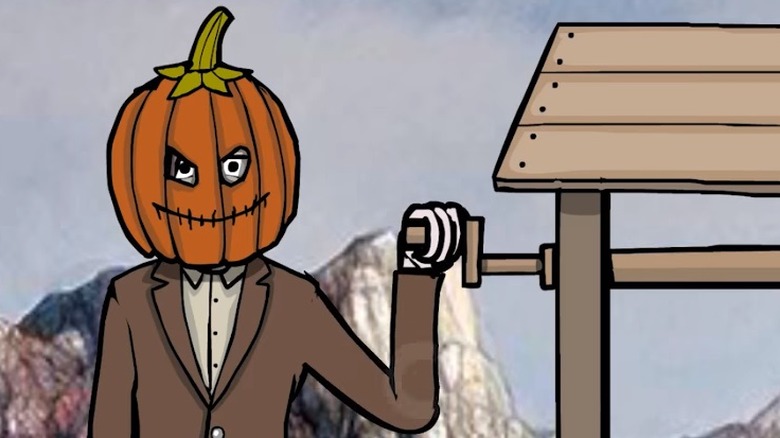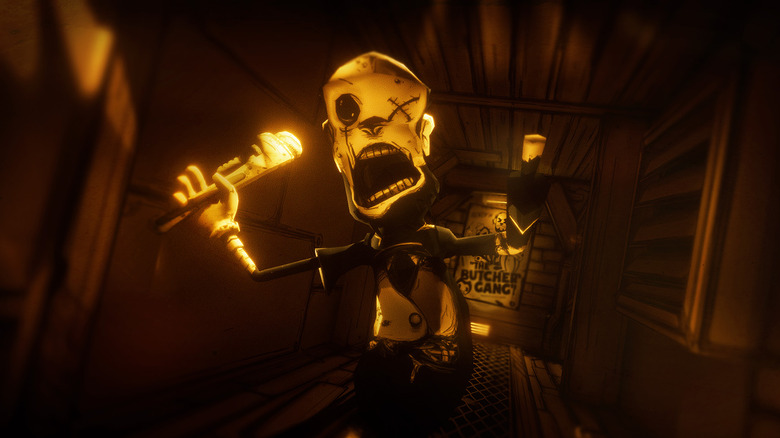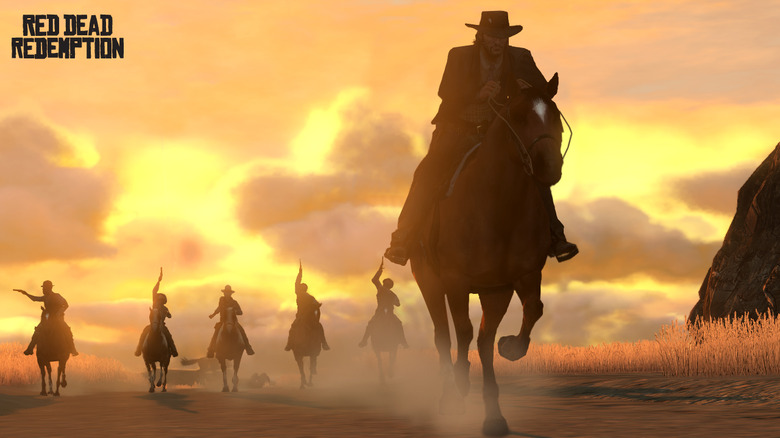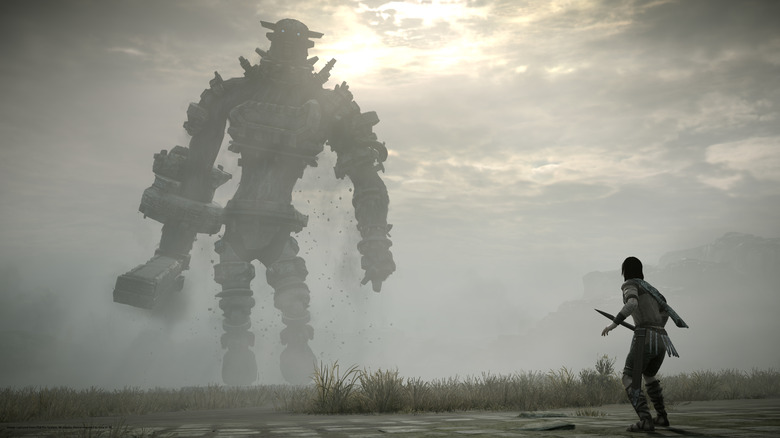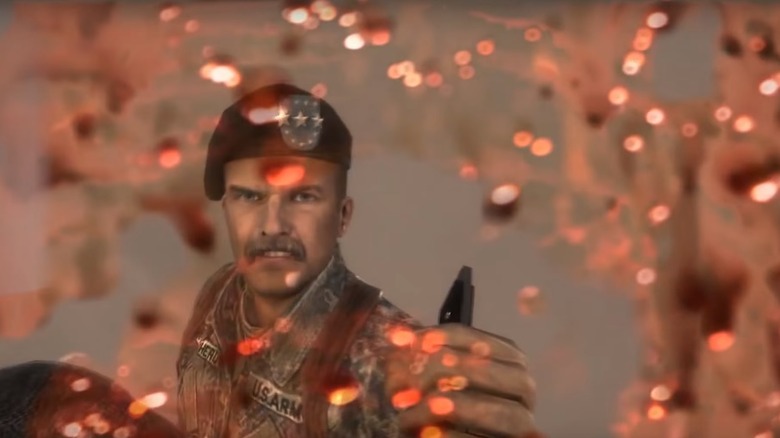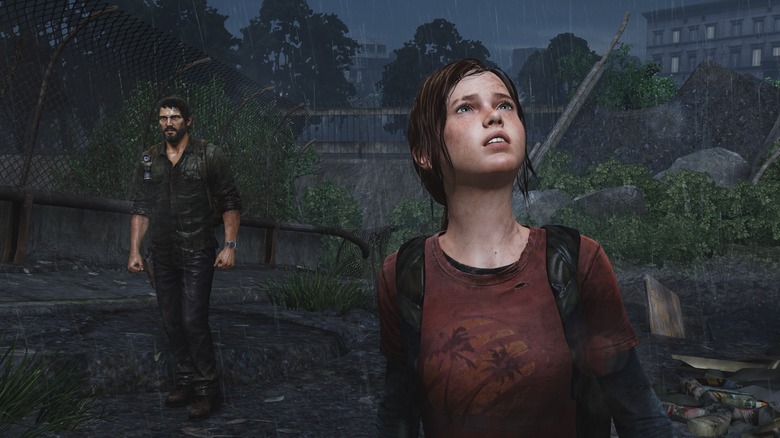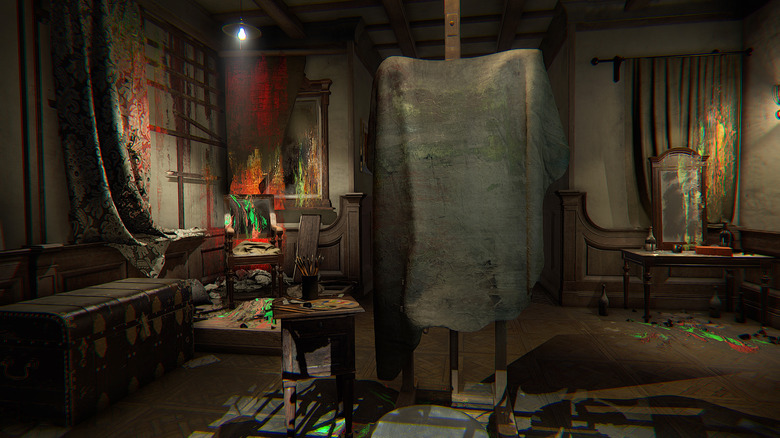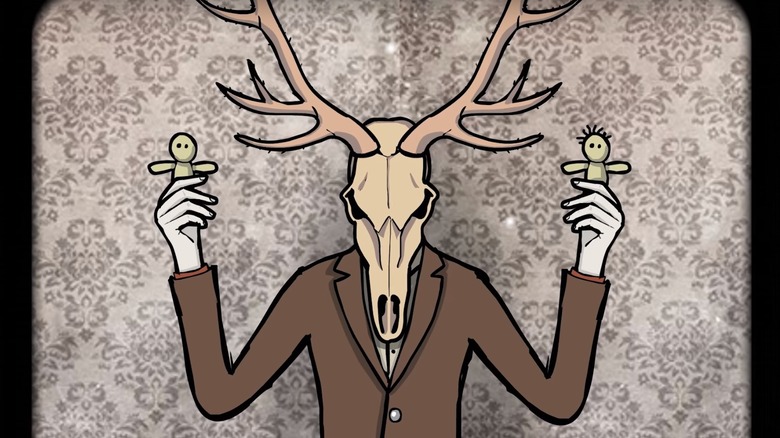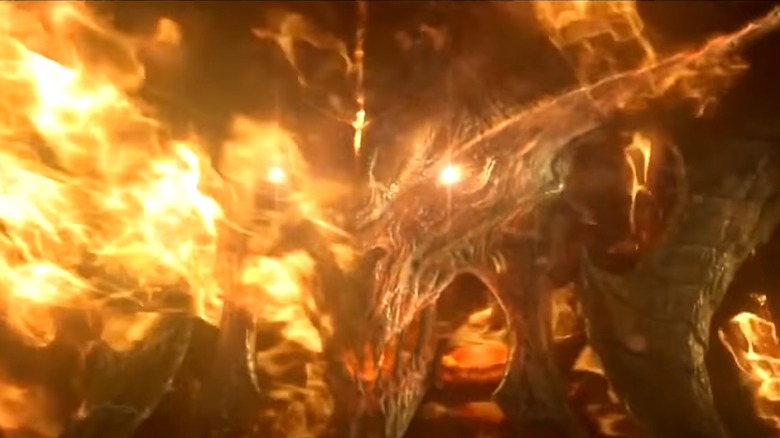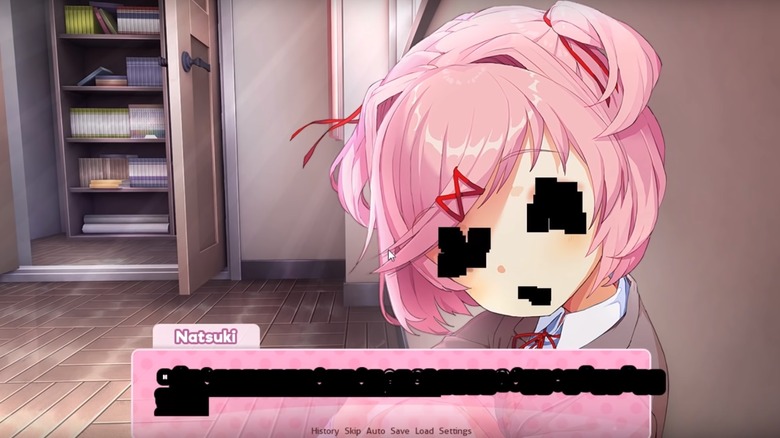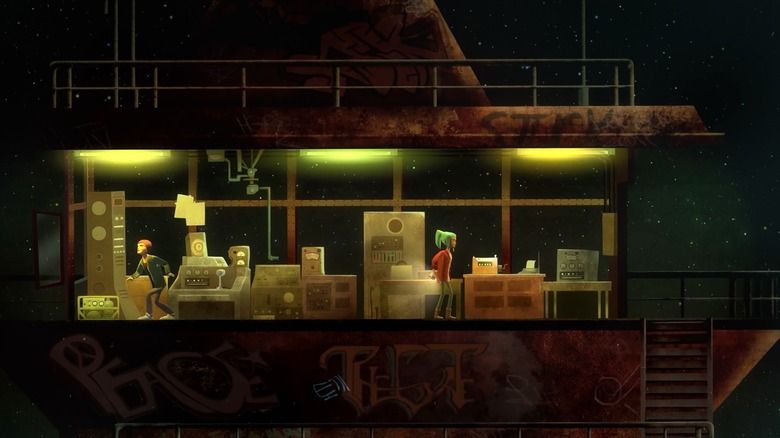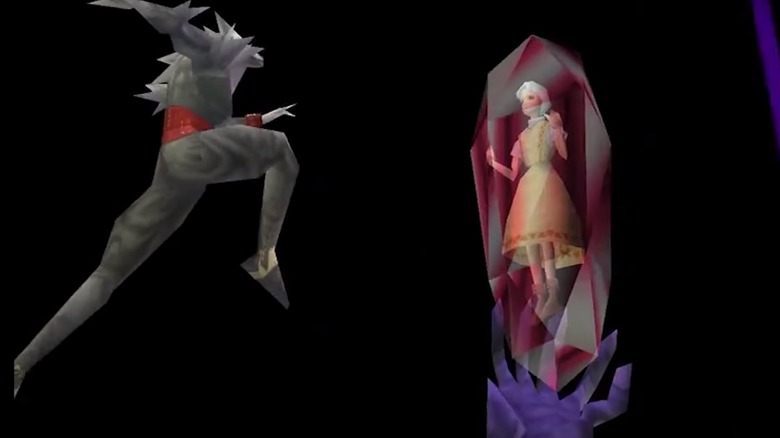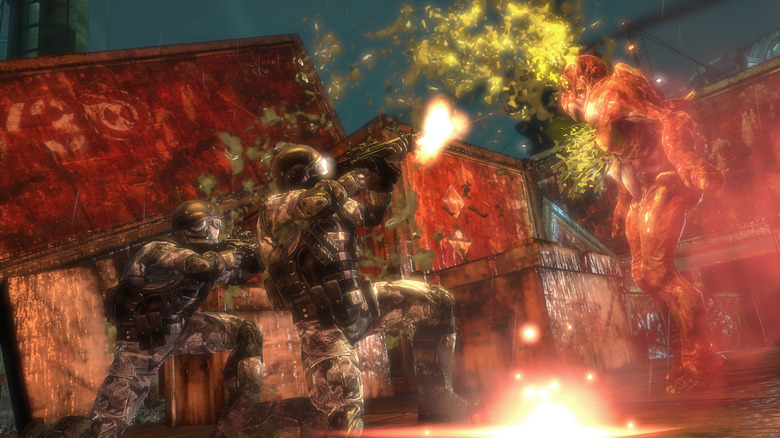The Bad Guys Win In These Video Games
Most everyone loves a happy ending where the hero conquers evil, saves the world, and things are made right again. But just like in life, that doesn't always happen in video games. Sometimes the villain is the one who ends up winning despite all of the best efforts of your player character. And then there are the times when you, yourself, end up being the villain all along.
Often the bad guys win in the end of a game because you were unable to stop them. Other times you may have accidentally helped them in some way. Or it's possible that you just generally made some bad decisions. But when they win, it's never an easy pill to swallow. And while tropes are made to be broken, it just doesn't quite sit well when the antagonist you've been fighting against the whole time ends up with the high ground. Especially when that high ground includes the assured destruction of the world. Here are some video games where the villain ends up winning. Beware of spoilers.
Beware tricky flashbacks in Bendy and the Ink Machine
Indie darling Bendy and the Ink Machine came seemingly out of nowhere. It was the sepia-toned game we didn't even know we needed in our lives. Playing as Henry, you return to Joey Drew Studios, where you used to be an animator. Unfortunately, you find the place overrun with horrifying ink monsters and real-life incarnations of the cartoon characters you helped create. Through found audio files and scattered clues, you begin to unravel the story of what happened. Sacrifices to the ink machine seem horrific, but it doesn't end there: your friend Joey Drew was also trying to put human souls into cartoon creations.
At the end of the game, players get to go head to head with the ultimate ink monster. By this point, you've already helped out several of your friends. You've also destroyed some of your former coworkers who were reincarnated as animated characters. You then take your protagonist Henry through the process of destroying the final monster, only to find yourself back at your friend Joey Drew's apartment. It soon becomes clear that this is a flashback and is showing the moment Drew tricked you into returning to the studio where he has trapped you. You quickly come to understand that he has used you as another human soul for his animated creations. But don't worry, we're sure being sacrificed to an ink machine isn't that horrible.
Red Dead Redemption doesn't sugarcoat the Wild West
Rockstar's 2010 release of Red Dead Redemption launched a hugely famous franchise that only continues to grow with the release of Red Dead Redemption 2. Since the second game is actually a prequel to the first, it almost makes it that much sadder to know that things don't quite work out in the end for our protagonist John Marston. This might make some of the decisions in RDR2 seem a bit pointless at times.
In Red Dead Redemption, gamers get to try their hand at being an outlaw in the Wild West. John Marston is a man plagued by guilt for his past wrongdoings. He is now seeking to make amends for all of his past transgressions. Unfortunately, no matter how much he tries to make up for his past, it ends up finding him. Though John successfully eradicates the band of outlaws he used to ride with, Agent Ross double-crosses him. After Ross leads a team of soldiers to his house, John valiantly makes a stand to buy his family time to get away. He is then shot dead by Ross.
Even though John's son does eventually get revenge on Agent Ross, it's hard to say that good truly triumphed. John wanted his son to avoid the life of violence he had lived. By avenging his father, he fell right into the trap John had worked so hard to keep him from.
You are the bad ending in Shadow of the Colossus
Shadow of the Colossus appears to be nothing more than a typical good-versus-evil story. Your character Wander has traveled to the forbidden land to revive a woman named Mono. He is promised by Dormin that if he kills the 16 colossi found throughout the land, he will revive Mono for him. Lucky for you, Wander possesses the ancient sword capable of destroying these massive enemies. He then proceeds to kill the colossi one at a time, finally finishing them all off. But not everything is as it seems.
After the last colossus is killed, you learn that Dormin was evil all along. He was originally split into 16 parts and trapped in each of the colossi by shamans to keep his evil from the world. By destroying these colossi, you have effectively released Dormin from his prison. This, of course, makes you the bad guy, since set this demon free. And you thought you were fighting evil all along!
Eventually, you are defeated by the shaman and all seems to be right with the world again. But you are reborn as a horned infant, allowing the evil to continue on through you.
Call of Duty: Modern Warfare 2 doesn't care about your happy ending
First-person shooter Call of Duty: Modern Warfare 2 isn't as straightforward as you'd expect a game in that genre to be. An intricate plot full of double-crosses, hidden identities, and failed attempts to bring peace to the world is only the beginning of the madness in these stories.
At the end of MW2, it almost seems like the good guys won. After all, the bad guy, Shepherd, was killed, even if he took a few of the heroes down with him. But the end of the second game is actually a big failure for the good guys. Though Shepherd ends up dead, a bunch of bad things still happen. The biggest problem is that Shepherd manages to initiate World War III before he dies, pitting Russia and the United States against each other. But on top of that, Makarov manages to get away from the good guys, and Price is forced to go into hiding for the part he played in Shepherd's death. Pretty bad all round, actually.
Luckily, the good guys regain their victory in the third game, but the second installment is firmly a loss for these men.
Maybe there's a moral grey area for The Last of Us
The Last of Us is an emotional topic for a lot of gamers, and for good reason. The game pairs up the zombie outbreak-immune Ellie with the grief-stricken survivor Joel. The two form a bond that, over time, becomes something of a father-daughter relationship. Still grieving the loss of his own daughter at the hands of a soldier, his desire to protect Ellie is strong. She also happens to be the possible key to creating a vaccine for the outbreak that has destroyed civilization. The fate of the world literally rests on Joel's ability to get Ellie to the Fireflies, who will attempt to create a vaccine.
But when Joel finds out that a portion of Ellie's brain must be removed to create the vaccine, he is unwilling to let her die. While wanting to save Ellie is virtuous, it comes at the expense of the rest of the population. Not only does Joel stop Ellie from making the sacrifice to save others, but he lies to her about it. In order to prevent her from feeling guilt, Joel tells her they attempted to make a vaccine and failed. When she presses him further, he swears he is telling the truth. Even though he saved her, he has still taken away her choice to save the entire world by only sacrificing one person. Viewed in that light, Joel is the true villain of Naughty Dog's masterpiece.
The painter's ego never dies in Layers of Fear
Indie horror game Layers of Fear is about as atmospheric as a game gets. As you play a painter and slowly unravel his past sins, the house changes to match your discoveries. It doesn't take long to realize that the gorgeous home you're in isn't actually reflecting the space around you. The painter, through his own delusions, has fabricated the world around him to help him deal with the things he's done.
As you near the end of the game, you learn more about the fire that disfigured his wife, the fact that she took her own life, and the daughter that was taken away from him. It is abundantly clear that he has repressed these memories, rather than trying to come to terms with the decisions that led to his current state of isolation. But he doesn't always have to. If you manage to get "The Painter" ending of the game, not only do you not have to face your past sins, but you get to praise your own genius. Ending with the painter hanging up a self-portrait in an immaculate gallery, we see that he hasn't addressed his wrongdoings. In fact, he even believes they are the things that make him a great artist.
Luckily, the other two endings of Layers of Fear let karma do its work.
The bad guys always win in Rusty Lake
Cooking up hotel guests and serving them to the other guests may seem relatively gruesome and dark, but it's just another day in the Rusty Lake franchise. Indie developer Rusty Lake has created a unique gaming experience with dark family secrets, demonic entities, sacrifices, and an awful lot of people who enjoy dressing up in dead animal attire. These games don't pull any punches where their victors are concerned. Because of the limited control you have over where the story is actually going, it becomes evident early on that the bad guys always win in these games.
Sometimes you're serving up hotel guests to each other in Rusty Lake: Hotel. Other times you're solving puzzles to show the cycle of murder and sacrifice in Rusty Lake: Roots. Or you're unraveling the past about your own misdeeds in Cube Escape Paradox. But in all of these scenarios, there are very few wins for the good guys. Most of the puzzles involved in these games have you unwittingly dismembering, torturing, or killing those around you. The most innocent of puzzles will still usually involve a dark sense of entrapment for those involved. Though the animal masks make it difficult to know who exactly is behind all of the murders linked between the games, it's abundantly clear that these masked villains will always win.
Don't trust Diablo to show you the truth
Blizzard is almost synonymous with the concept of the hero's journey. In all of their games, player characters battle against evil and triumph in the end. Sort of. It turns out, even when you may think you've triumphed over evil, you may have actually just assisted it. This is what happens in the Diablo franchise not once, but twice. At the end of Diablo 1 your player character destroys Diablo and traps him in a soul stone. He even sacrifices himself by putting the soul stone in his own body.
By the time you play Diablo 2, it becomes apparent that your protagonist from the first game made a huge mistake. Trapping Diablo in the soul stone and shoving it into his head was a monumentally terrible thing to do. All you really managed was to give Diablo a new vessel to possess so that he could continue his reign of terror in a fresh new body. If that wasn't enough, the good guys still don't manage to win in Diablo 2. At the end of the game, they manage to destroy the soul stones, thinking that this will end Diablo's rule. But with the release of Diablo 3, it becomes evident that destroying the soul stones didn't do a single thing. Diablo and his minions are back and evil as ever. It was a valiant effort on behalf of our heroes, though.
Doki Doki Literature Club makes sure everything is "just Monika"
Few things are more confusing than the "psychological horror" tag given to sweet dating sim Doki Doki Literature Club. Unless of course you've played the game. Then you understand it all too well. On the outside, this pastel-pink anime dating sim seems innocent and adorable. The further you get into the game, however, the more you start to pick up on sinister undertones. When you attend your first meeting of the literature club, it's clear all of the members have a crush on you. This normally wouldn't be a bad thing, until you realize something darker is going on.
As you near the end of your playthrough, you see that while the rest of the girls are busy digging their own graves both literally and figuratively, the club president Monika has been oddly self-aware. She begins dropping hints about the fact that you're just playing a game. She even alludes to Sayori's suicide before anyone knows about it. Before long, it becomes clear that Monika is aware she's inside a video game and has corrupted or deleted the other girl's character files to get you all to herself. Even if you manage to physically delete her character file from your computer, this only turns Sayori into the fatal-attraction-level stalker who kills the other girls off. The only way to win in this game is to not play it at all.
Don't trust The Sunken in Oxenfree
Night School Studios' 2016 indie game Oxenfree is nothing if not a mind trip. The innocent point-and-click game with the gorgeous art direction quickly devolves into something out of a horror movie without any warning. A night of frivolity with your high school friends on Edwards Island turns dark when you use a handheld radio to tune into some unused radio frequencies. Unbeknownst to you, you've actually connected with a horde of malicious spirits on Edwards Island known as The Sunken. These are the victims of a submarine accident who are now doomed to stay on the island. And now they need human vessels to reside in.
While your protagonist Alex tries to reason with, outsmart, and even trap The Sunken again, it soon becomes obvious that none of this will work. Oxenfree gives players a large number of possible endings, with different relationships strengthened or destroyed. You can even bring your dead brother back to life or damn his girlfriend to stay on the island as a sacrifice. But no matter what you do, you never win. Even when you've completed the game and think you've saved your friends or escaped the island, you haven't. Because every time the game ends, it simply starts over again from the beginning. You and your friends are trapped in an endless time loop, forever stuck on the island to be vessels for The Sunken.
Castlevania: Legacy of Darkness is a trap!
Konami's 1999 action-adventure game Castlevania: Legacy of Darkness is known as one of the few Castlevania games to have a pretty black and white ending. Before, the franchise mostly touted games that ended in a stalemate or with the good guys winning by a tiny margin. Legacy of Darkness doesn't sugarcoat who wins at the end of this game. Playing as Cornell, players embark on a mission to stop their sister from being used as a sacrifice to resurrect Dracula. The player character is very clearly the "good guy" in this situation, but in the end, things take a bad turn.
Once your character finally finds his sister Ada and faces the final boss, a sacrifice must still be made. Cornell must give up his supernatural powers in order to stop his sister's sacrifice. This seems perfectly aligned with what would typically be expected of the hero, but in this case, the hero doesn't know the whole story. It turns out, Dracula never wanted to sacrifice Cornell's sister to resurrect him. All along, your power that you willingly gave up to save her was what he needed as the perfect sacrifice. And by selflessly choosing to save your sister, you have single-handedly assured that the bad guy won. At least you can say that your intentions were honorable.
All choices lead to chaos in Singularity
2010 first-person shooter game Singularity is one part action and one part science. Playing as Captain Renko, players are sent to investigate an electromagnetic surge on a supposedly uninhabited island. After crash landing, things get really interesting. Players will phase back and forth between the present and 1955. And if there's one thing movies and games have taught us about time travel, it's that it always gets complicated. After saving Demichev, a scientist in 1955, it becomes clear that he may not be a good guy, as the present time now shows Demichev as the leader of the world. To make things more complicated, you learn that Barisov, someone killed in the past by Demichev, created a device that can stop him. This means more time travel to save Barisov and alter the present even further.
At the end of the game, you are given a choice to make. You can kill Demichev to prevent him from taking over the world, but by doing this, Barisov will recover the time altering device and take over himself. If you kill Barisov, you and Demichev will rule together until his jealousy at your power prompts a second Cold War. And if you choose to shoot them both, you become the world leader using power and fear to rule. So no matter what choice you make, either the bad guys win, or you win and eventually become the bad guy. Talk about a lose-lose situation.

